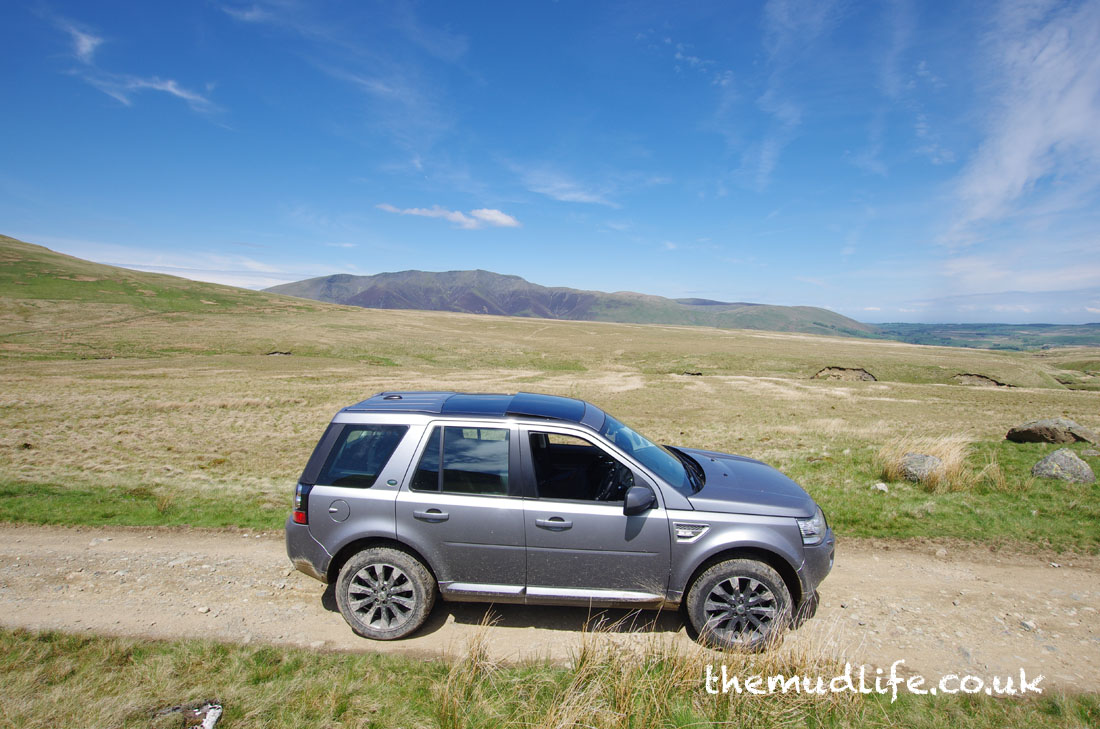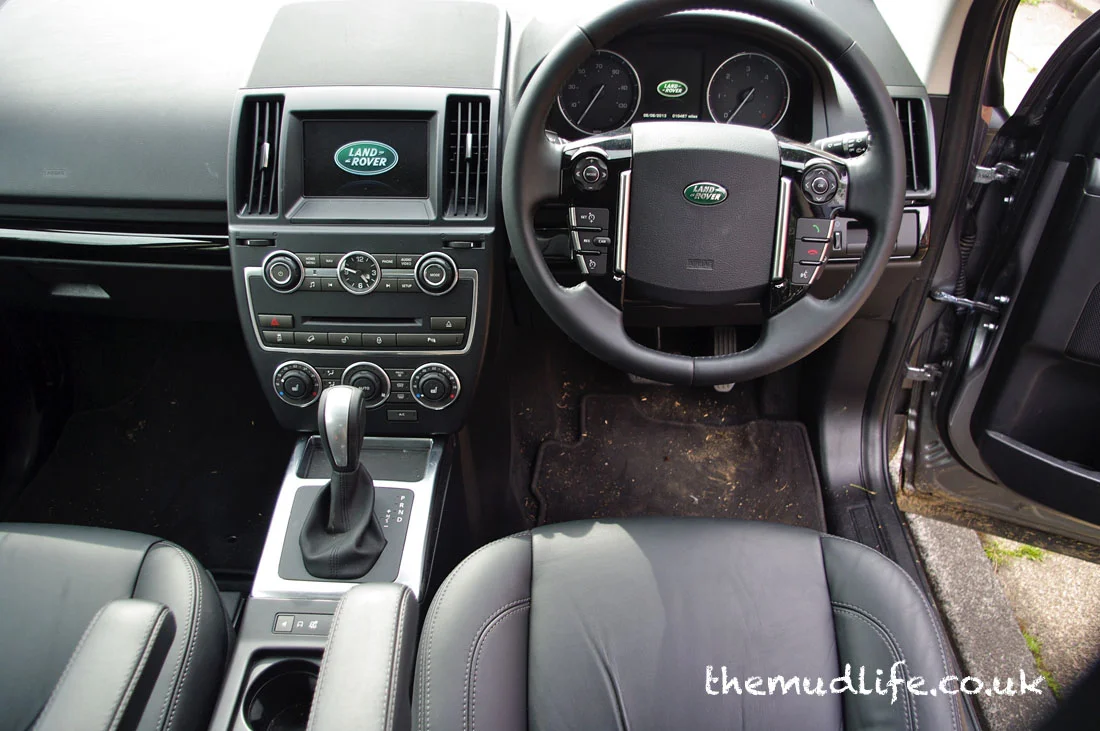Freelander 2 - Reflections...
What is it?
It was whilst I was searching for a new car for Muddy Madam that I remembered the good old Freelander 2, I borrowed from Land Rover a few years ago for an article I was writing for the now defunct Land Rover World magazine. Unfortunately they’re still too expensive for our modest budget, but that got me toking of how good it actually was.
The model they sent was HSE Lux spec, SD4 190PS resplendent in Orkney Grey with posh Windsor Leather Ebony Seats, a total of £40,000, if I remember correctly.
Since its introduction in 1997, the Freelander has been a familiar sight on our roads. It’s won many awards, gathered plenty of faithful owners and survived the Camel Trophy and G4, but of course it wasn’t without its faults. The K Series 1.8ltr engine in the original Mk1 had well documented cooling problems that lead to head gasket failures and costly repair bills, the V6 petrol was thirsty and owners often removed the rear prop shaft to avoid expensive IRD repairs too. Then in 2006 all that stopped with the new Freelander 2, it’s been said that it was the most reliable Land Rover to date back then, not only by their owners, but by quite a number of Land Rover mechanics, both independent and main dealers. Its revamp took it further upmarket to a higher price bracket, but that didn’t stop it from being a popular vehicle. Most experts openly admitted that the Freelander 2 was still the best off roader in its class, but what was it like to live with? What indeed...
On the road
I'd read somewhere that its refinement on the motorway was let down by substantial wind noise around the windscreen, I have to be honest and say that I didn’t notice any, and I drove a fair few motorway miles. I quite liked the slightly firm ride that the optional 19-inch alloys that were fitted gave, from fast corners to uneven dirt tracks they didn’t feel too harsh and offered plenty of feedback, especially whilst off the beaten track..
The SD4 2.2 litre turbo diesel offers its driver 190PS which I found ample. Obviously if you’re used to driving fast cars then you might find it lacking, but overall I reckon it suits the Freelander well. I was also impressed with its fuel consumption, official figures quote that it will achieve a combined mpg of 40, I’d say that’s about right.
Off road
I usually like to take test vehicles to Parkwood Off Road Centre which is located in Tong near Leeds, but time wasn’t on my side that week, that said, I did manage to drive along the Old Coach Road in Cumbria and around Edward's farm. It performed as you would expect a Land Rover to, whether on 4 wheels, 3 wheels, or even balancing on its two diagonally opposing wheels, it never faltered. Seriously, with Terrain response who needs articulation?
It did however fail me once, but that was down to wet grass and a well camouflaged mound. The 235-55-19 Continental Cross Contact UHP tyres that are described as a ‘summer tyre’ just spun helplessly. Reversing and changing my line was enough to carry on my travels.
Both the TD4 and SD4 Four wheel drive models are equipped with the same intelligent four-wheel drive system as before. The system responds to changes in grip in 150 milliseconds to adjust torque between front and rear axles. Terrain Response optimises the electronic systems for conditions, and there are four settings: General Driving, Grass-Gravel-Snow, Mud & Ruts and Sand. The Freelander has something called the Gradient Release control that ensures smooth hill starts both ascending and descending for safety and driver confidence on any surface. Again, like the ‘intelligent’ hand brake, I didn’t really notice it which probably means it was working like a treat!
Interior
Let’s get my biggest gripe out of the way first, the bottom bit of the upright centre column that houses all the major switchgear, although well designed with everything clearly marked out, but its corner is way too sharp. It’s probably just the way I drive, but I end up resting my left leg on the downward console which leaves a huge and painful indentation in my shin. If it was my car I’d have to fit foam padding down there or something!
Apart from that, sitting behind the steering wheel is a pleasant place to be. Buttons are all streamlined and there’s a collection of rotary dials for the heaters other things. For the 2013 model the Terrain Response rotary dial has gone in favour of even more buttons to press. Unfortunately though it has an electronic handbrake, I say unfortunately like it’s a bad thing, but it’s just my personal opinion and I don’t like them.
The dashboard is straight forward with proper dials for once, I like proper dials. In between the dials you have the usual information, what gear you’re in, temperature, fuel and a digital speedo. A bit weird I know, but I ended up looking at the digital readout more that the actual speedo, not sure why, maybe because it’s in the middle.
The removal of the traditional handbrake gave the design boffins at Land Rover the opportunity to give us more storage space, which is always nice. And on that subject, just in front of the gear stick there’s a tray for my phone.
At 18st 4lbs and 6ft something or other, I found the seats to be very supportive, though perhaps a tad short for my thighs, but I soon got used to that. I also found the rear seats comfy and legroom to be ample.
The boot is a good size too, though smaller than the Evoque with the rear seats in the up position. Fold them down and the Freelander swallows more. A huge plus point for me is that the Freelander has the space in the rear for a full size spare wheel. I really don’t like space savers and puncture kits, especially for a 4x4.
The HSE came with the rear reversing camera which was great for the Evoque with its narrow windows, I doubt though you’ll need it much in the Freelander as it’s a square vehicle and you can tell where the boots ends.
Conclusion
I have to admit that after covering just under 600 miles in a week and a bit, I was quite sad to see the Freelander 2 go. It looked great, it drove great, it was practical, fairly frugal and decent off road... but would I buy one? No. "Hang on, didn’t it just tick all the boxes?" You may ask. Yes it did, and don’t get me wrong, I would jump at the opportunity to accept one as a company vehicle, I’d even buy one for Muddy Madam, but as a main car for me, nah.
It has nothing to do with my, let’s face it, pernickety dashboard objections which in no way stopped me from enjoying our time together, I think I just found it a bit uninspiring, unmotivating and a bit boring, that’s all! Besides, I’m a big car kinda guy, so it’ll be a Defender, Discovery or Range Rover for me thank you very much.






















